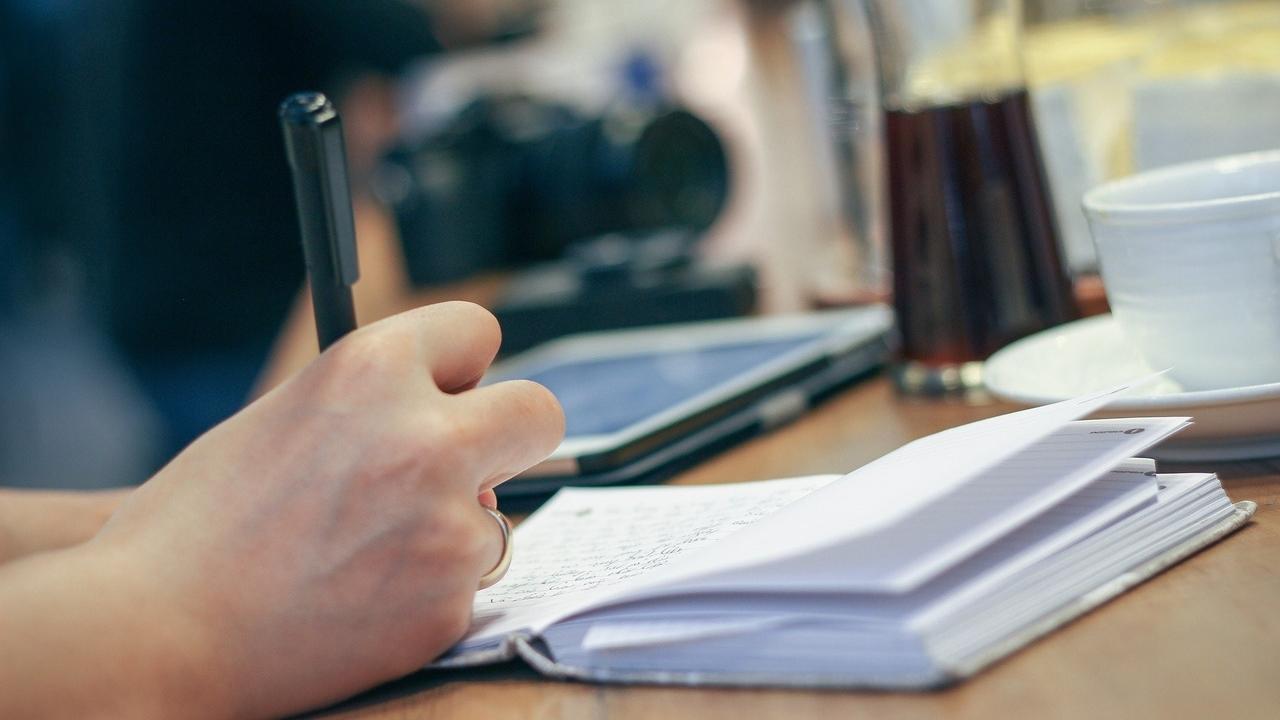How Much Should I Be Memorizing?

To memorize, or not to memorize?
That is the first question most of my public speaking clients come to me with.
Here are the two scenarios I usually hear:
- If I try and memorize my whole talk, it takes HOURS and I end up sounding stiff and robotic.
- When I just wing it, sometimes it turns out great, but sometimes I completely lose my train of thought and start throwing out “likes” and “ums” all over the place.
Either of those sound familiar to you?
(We’ve ALL been there.)
So, how much exactly should you be memorizing?
In my opinion, whether your presentation is 5min or 90min, the answer is the same.
Here are the 3 elements to memorize:
- Your Hook
- Your Closer
- Your Roadmap
Let’s break that down, shall we?
Your Hook
This is the opening of your talk. You always want to start your presentation with a hook that engages the audience.
Your hook can take many forms. Here are a few possible openers:
- Ask a question that requires a show of hands
- Tell them a story that lights up the sensory parts of their brains (more on that in another article!)
- Invite them to shout out the first word that comes to mind when you say______
There is no right or wrong here!
As long as you find a way to actively engage your audience, you’ve got a hook.
(PRO TIP: Sharing your name and bio is NOT a hook.)
In order to start your talk strong, I recommend practicing your hook every day for a week leading up to your engagement. It doesn’t need to be word-for-word memorized, but starting off the talk confidently will keep you from panicking later in the presentation.
90% of the time, forgetting what you’re going to say next is not a product of lack of preparation, it’s a side-effect of nerves.
The easiest way to sidestep those nerves is to give yourself a strong start!
Your Closer
As the name implies, this is how you close your talk. (Have I blown your mind yet?!)
I always recommend that you memorize word-for-word the last two sentences of your talk.
Why?
Because I want you to stick the landing!
Have you ever heard of the Peak-End Theory?
It’s a psychological rule created by Nobel prize winning psychologist Daniel Kahneman that states that our memories of an experience are determined by two things:
- How we felt at the more extreme peak of the experience (good or bad)
- How we felt as the experience ended
It’s important to note that our evaluation of an experience is not an average of how we felt about it throughout.
So, no matter how compelling your 1hr presentation is, if you end the talk with
“So, um, yeah. That’s all I got. Thanks for listening. Yeah, uh. Thank you.”
that is how people will remember your presentation.
If you’re going to memorize any two sentences, memorize your closer.
Your Roadmap
So, now that you know how you’re opening and closing this thing, what about everything else?!
That is what your roadmap is for.
You don’t need to memorize all the content you’re teaching. You just need to remember how you’re getting from section to section.
Here’s a sample outline for a fake talk I would very much like to see:
Ghostbusting: A Practical Guide for the Paranormal Hobbyist
- Hook: How many people here believe in ghosts?
- Section A: How to identify a ghost
- Section B: What to do if you encounter a ghost
- Section C: Best practices for busting ghosts
- Closer: I ain’t afraid of no ghosts!
So to review, you want to more or less memorize your hook and your closer.
For the rest of the talk, it’s much more important that you know how you’re transitioning from section to section.
You may even want to memorize those transitional sentences if you know that you have a fear of losing your place.
For many people, it’s enough just to memorize the order in which the content occurs.
As long as you know that “What to do if you encounter a ghost” comes after “How to identify a ghost,” you’re golden.
So, there you have it!
Those are the 3 elements of a talk I suggest memorizing, whether you’re a newbie speaker or a seasoned pro.
(Psst! Want your own fill-in-the-blank presentation outline?!)
Then make sure to grab your free gift, "Mesmerize, Don't Memorize."
Apply this basic outline to any speaking engagement to feel twice as prepared in half the time
(without hours of pointless memorization!)
Now that you've grabbed your copy, I suppose that brings us to our closer...
Oh wait...did I not think of a closer!?
Uh...
I AIN'T AFRAID OF NO GHOSTS!!
The End.

Sara Glancy is an NYC-based actor and public speaking coach and the founder of Speak Masterfully, a service that helps professionals take the stage with less fear and more fun!
Want to nail your next presentation?!
Apply this basic outline to any speaking engagement to feel twice as prepared in half the time!



